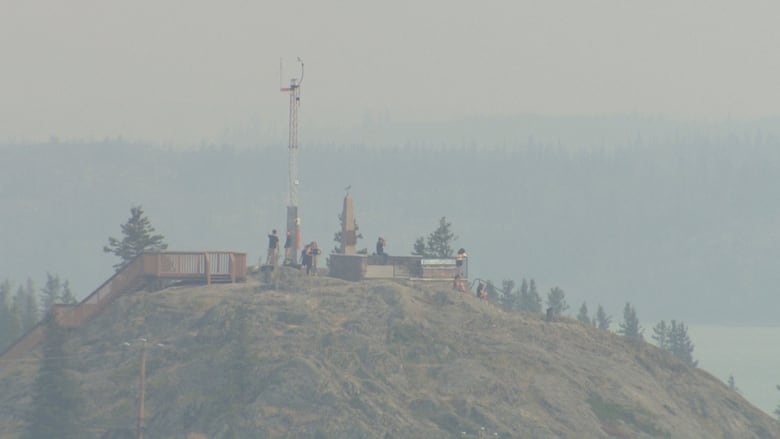Wildfire smoke from the south creating poor air quality in parts of N.W.T.
High-risk conditions are expected to continue until Thursday

Poor air quality from wildfire smoke has reached extreme levels in Yellowknife and other southern N.W.T. communities, according to Environment and Climate Change Canada.
Though air quality numbers are fluctuating hourly, high-risk conditions are expected to continue until Thursday night.
Environment and Climate Change Canada measures air quality on a scale from one to 10, with one being the lowest risk and 10 being the highest.
"It's been all over the place today [Wednesday] in Yellowknife, 10 plus at midnight, dropped down to three at 6 [p.m.] and back up to 10 plus again ... but the important thing is to modify the behaviour to the extreme value," said Brian Proctor, a meteorologist with Environment and Climate Change Canada.
In a social media post Wednesday, city of Yellowknife announced it is offering public facilities such as the Yellowknife Fieldhouse as clean air shelters.
Proctor said people in the capital city are seeing smoke from fires just south of the territory.
"We got a lot of wildfire smoke that is sort of prevalent across northeastern B.C., portions of the territories, northern Alberta and northern Saskatchewan. And bringing more and more smoke up to the Yellowknife area," Proctor said.
Proctor said rain may bring some relief for South Slave communities such as Hay River and Fort Smith, but it will only be temporary.
"Everything is indicating that the southern portion of the territory is probably going to be above normal temp and below precipitation wise, so August into September is not looking particularly optimistic from that point of view," Proctor said.
Overall, Proctor said the wildfire risk has been better than last year, but the season is still far from over.

